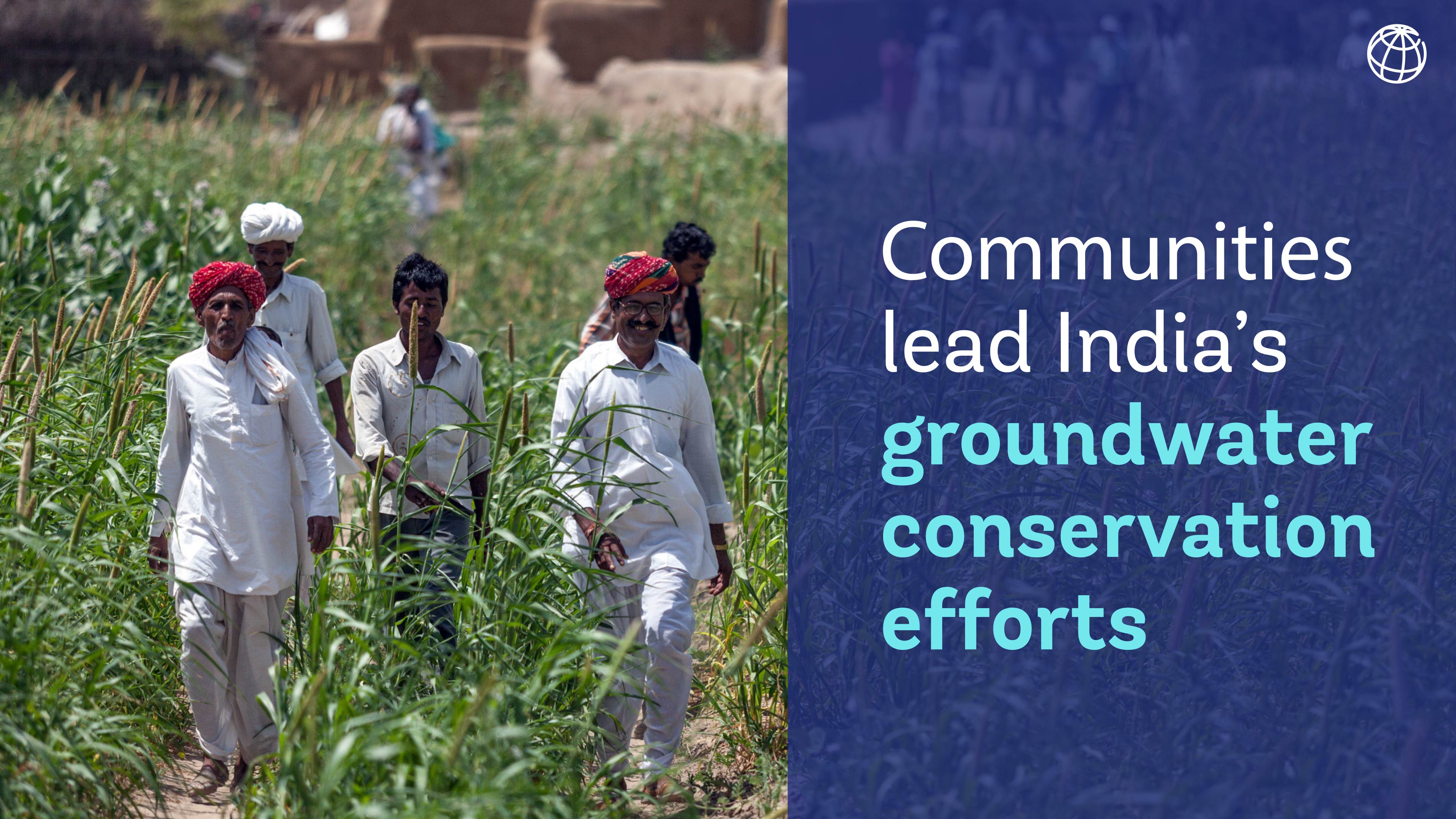How is India addressing its water needs?Communities lead India’s groundwater conservation effortsThe Atal Bhujal Yojana, India’s largest com...
Published on by Water Network Research, Official research team of The Water Network

Communities lead India’s groundwater conservation efforts
The Atal Bhujal Yojana, India’s largest community-led groundwater management program, is helping improve rural livelihoods and build resilience in 7 Indian states which have the highest rates of groundwater depletion.
Come summer, and water becomes a commodity as precious as gold in India. The country has 18 percent of the world’s population, but only 4 percent of its water resources, making it among the most water-stressed in the world. A large number of Indians face high to extreme water stress, according to a recent report by the government’s policy think tank, the NITI Aayog. India’s dependence on an increasingly erratic monsoon for its water requirements increases this challenge. Climate change is likely to exacerbate this pressure on water resources, even as the frequency and intensity on floods and droughts in the country increases.
The World Bank is engaged in different aspects of water resource management and the supply of drinking water and sanitation services across the country. Here are some of the ways how.
Stemming groundwater depletion
Groundwater is one of the most important sources for irrigation as well as for rural and urban domestic water supply. However, overexploitation of this valuable resource has led to its depletion.
The World Bank is helping the supporting the government’s national groundwater program, the Atal Bhujal Yojana, to help improve groundwater management. Implemented in 9000 gram panchayats across seven Indian states, this is the world’s largest community-led groundwater management program. Since groundwater conservation lies in the hands of hundreds of millions of individuals and communities, the program is helping villagers understand their water availability and usage patterns so they can budget their water use accordingly.
Attached link
https://www.worldbank.org/en/country/india/brief/world-water-day-2022-how-india-is-addressing-its-water-needs#:~:text=The%20country%20has%2018%20percent,think%20tank%2C%20the%20NITI%20Aayog.Taxonomy
- Governance
- Governance & Planning
- Water Governance
- India